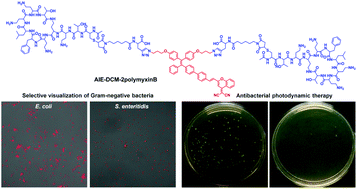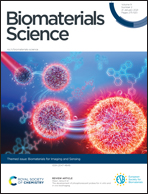A peptide-based aggregation-induced emission bioprobe for selective detection and photodynamic killing of Gram-negative bacteria†
Abstract
Herein, we report a new bioprobe with aggregation-induced emission (AIE) characteristics by conjugation of a far-red/near-infrared emissive AIE luminogen and two polymyxinB peptides. Due to the strong binding effect between polymyxin B and the lipopolysaccharide in the cell wall of Gram-negative bacteria, the bioprobe can selectively visualize Gram-negative bacteria and effectively kill them via photodynamic treatment.

- This article is part of the themed collection: Biomaterials for Imaging and Sensing


 Please wait while we load your content...
Please wait while we load your content...